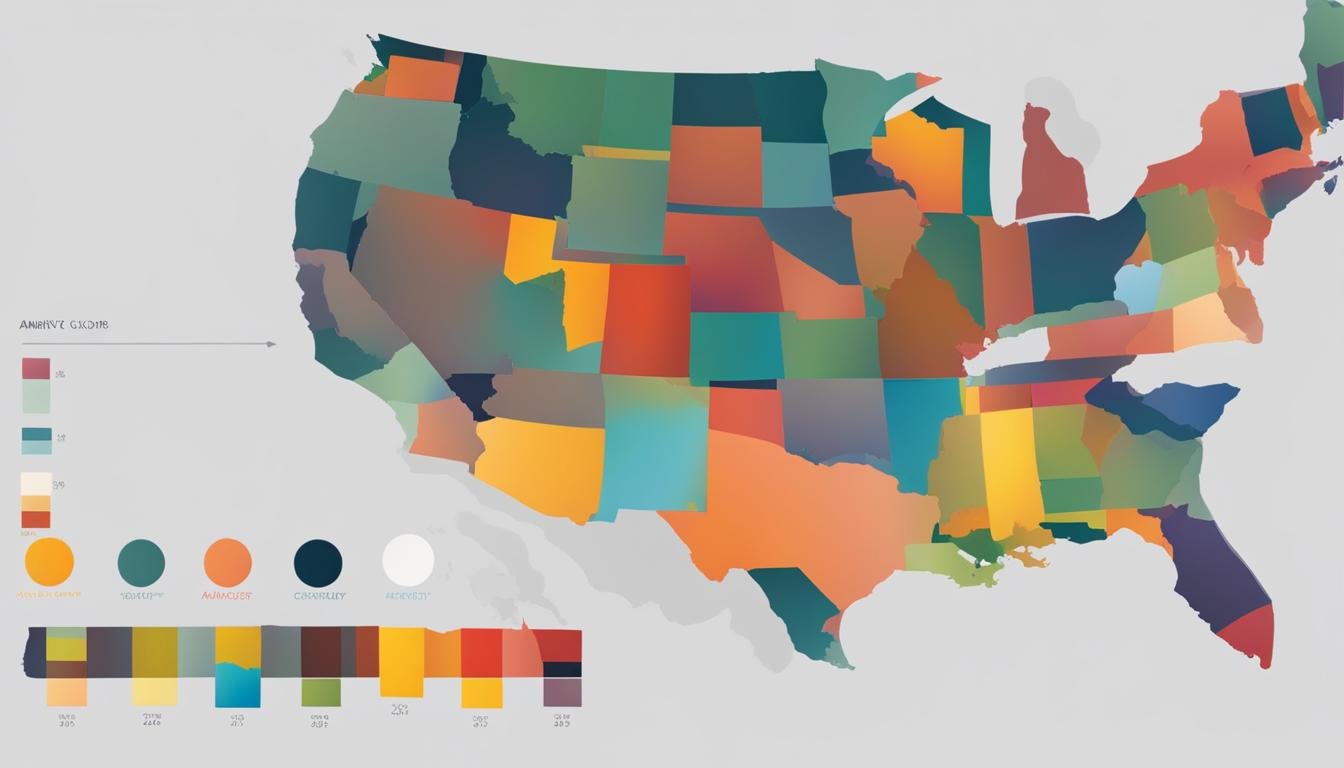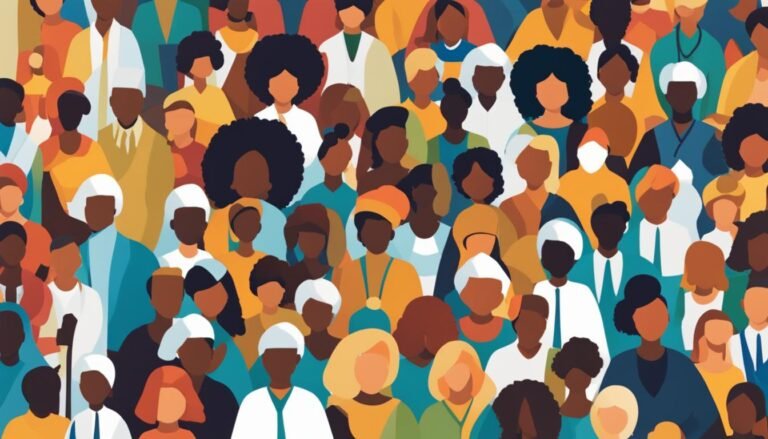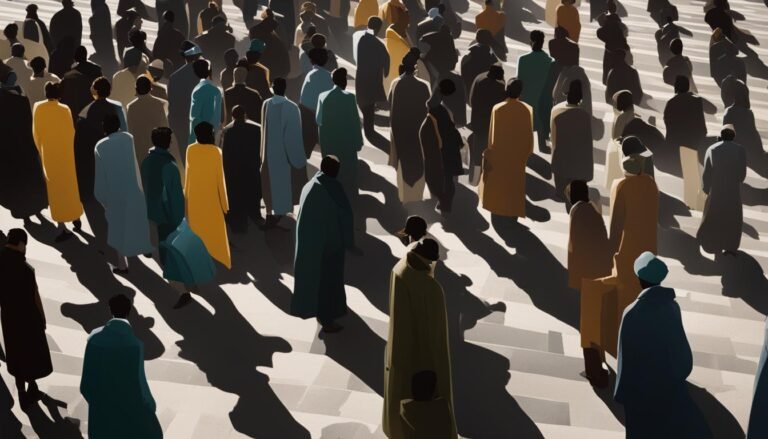Which Ethnicity Has the Most Anxiety?
Anxiety is a common mental health condition that affects people of all ethnicities. However, research suggests that the prevalence of anxiety disorders may vary among different racial and ethnic groups. Understanding these differences can help healthcare providers tailor treatment and support to effectively address the unique needs of individuals from diverse backgrounds.
A study conducted by the Collaborative Psychiatric Epidemiology Studies (CPES) found that the rates of anxiety disorders differ among ethnicities. White Americans were more likely to be diagnosed with social anxiety disorder, generalized anxiety disorder, and panic disorder compared to African Americans, Hispanic Americans, and Asian Americans. On the other hand, African Americans had higher rates of post-traumatic stress disorder (PTSD) compared to other racial groups. Asian Americans were less likely to be diagnosed with anxiety disorders compared to Hispanic and White Americans.
These findings indicate that race and ethnicity play a role in the prevalence of anxiety disorders. It’s important to note that these statistics provide a general picture and may not apply to every individual within a particular ethnicity.
Key Takeaways:
- White Americans have higher rates of social anxiety disorder, generalized anxiety disorder, and panic disorder compared to other ethnic groups.
- African Americans have higher rates of post-traumatic stress disorder (PTSD) compared to other racial groups.
- Asian Americans have lower rates of anxiety disorders compared to Hispanic and White Americans.
- Race and ethnicity play a role in the prevalence of anxiety disorders, but individual experiences may vary.
- Understanding these differences can help healthcare providers better tailor treatment and support for individuals from different backgrounds.
Prevalence of Anxiety Disorders by Ethnicity
In a large epidemiological study conducted by the National Epidemiologic Survey on Alcohol and Related Conditions, it was found that the 12-month and lifetime prevalence of social anxiety disorder (SAD) was lower among Asian Americans, Hispanic Americans, and African Americans compared to White Americans. Similar patterns were observed for generalized anxiety disorder (GAD) and panic disorder. However, some studies have reported no significant differences in anxiety disorder prevalence rates between Hispanic Americans and White Americans. Overall, the prevalence of anxiety disorders varies among different ethnic groups.
When examining the prevalence of anxiety disorders by ethnicity, a clear trend emerges. Asian Americans, Hispanic Americans, and African Americans have lower rates of social anxiety disorder, generalized anxiety disorder, and panic disorder compared to their White American counterparts.
In analyzing the available data, the study found that the 12-month and lifetime prevalence of social anxiety disorder is notably lower among Asian Americans, Hispanic Americans, and African Americans, in comparison to White Americans. Similarly, the prevalence rates for generalized anxiety disorder and panic disorder are also lower among non-White ethnic groups. However, it’s important to note that some studies indicate no significant differences in anxiety disorder rates between Hispanic Americans and White Americans.
These findings highlight the importance of considering race and ethnicity when examining the prevalence of anxiety disorders. While anxiety disorders can affect individuals from any racial or ethnic background, the rates and overall prevalence vary among different groups. The reasons behind these disparities are complex and multifaceted, influenced by a combination of genetic, environmental, cultural, and socio-economic factors.
“The findings from the National Epidemiologic Survey on Alcohol and Related Conditions clearly indicate that the prevalence of anxiety disorders differs among racial and ethnic groups. It is crucial to recognize and address these disparities to ensure equitable mental health care for all.”
To gain a better understanding of the prevalence of anxiety disorders by ethnicity, let’s take a closer look at the specific rates for social anxiety disorder, generalized anxiety disorder, and panic disorder among different racial groups.
| Racial Group | 12-Month Prevalence (Social Anxiety Disorder) |
Lifetime Prevalence (Social Anxiety Disorder) |
12-Month Prevalence (Generalized Anxiety Disorder) |
Lifetime Prevalence (Generalized Anxiety Disorder) |
12-Month Prevalence (Panic Disorder) |
Lifetime Prevalence (Panic Disorder) |
|---|---|---|---|---|---|---|
| White Americans | 9.23% | 17.45% | 3.89% | 9.99% | 2.24% | 5.82% |
| Asian Americans | 7.15% | 13.02% | 2.65% | 7.23% | 1.64% | 3.89% |
| Hispanic Americans | 6.75% | 14.97% | 3.25% | 8.41% | 2.01% | 4.93% |
| African Americans | 6.61% | 13.99% | 2.87% | 8.12% | 1.80% | 4.54% |
The table above displays the 12-month and lifetime prevalence rates of social anxiety disorder, generalized anxiety disorder, and panic disorder among different racial groups. It is evident that White Americans exhibit higher rates across all three anxiety disorders compared to Asian Americans, Hispanic Americans, and African Americans. These findings provide valuable insights into the prevalence of anxiety disorders among various ethnicities.
Raising Awareness and Addressing Disparities
The prevalence of anxiety disorders by ethnicity illustrates the need for targeted interventions and support to address mental health disparities. By increasing awareness and understanding of these disparities, we can work towards reducing the burden of anxiety disorders among racial and ethnic minorities.
Efforts such as cultural competency training for healthcare professionals, accessible mental health services, and community outreach programs can help ensure equitable access to mental health care for everyone, regardless of their race or ethnicity. Recognizing and addressing the unique challenges faced by different racial and ethnic groups is essential in achieving mental health equity.
Mental Health Screening Data by Race and Ethnicity
Mental Health America conducted a screening program during the COVID-19 pandemic to assess the mental health status of individuals from different racial and ethnic backgrounds. The data revealed significant variations in rates of anxiety and depression among racial minorities.
Among the various racial and ethnic groups screened, Asian or Pacific Islander individuals had the highest proportion of anxiety and depression symptoms. They reported experiencing heightened levels of psychological distress during the pandemic. Black or African American individuals also exhibited an elevated prevalence of anxiety and depression. Hispanic or Latino individuals and Native American or American Indian individuals also showcased higher rates of mental health issues compared to their white counterparts.
These findings highlight the disparities in mental health outcomes among different racial and ethnic groups. Racial minorities are disproportionately affected by anxiety and depression, highlighting the urgent need for targeted interventions and support to address their mental health concerns.

Racial and Ethnic Disparities in Anxiety and Depression Rates
| Racial/Ethnic Group | Proportion of Anxiety Symptoms | Proportion of Depression Symptoms |
|---|---|---|
| Asian or Pacific Islander | Highest | Highest |
| Black or African American | High | High |
| Hispanic or Latino | Elevated | Elevated |
| Native American or American Indian | Elevated | Elevated |
Disparities in Anxiety and Depression Rates
A study published in the journal Plus One revealed significant disparities in anxiety and depression rates among different racial and ethnic groups during the COVID-19 pandemic. The research findings shed light on the mental health impacts experienced by racial minorities and emphasize the existence of racial disparities in mental health.
The study found that Black, Hispanic, and Asian individuals were more likely to screen positive for depression compared to their White counterparts. This suggests a higher prevalence of depression within these racial groups, highlighting the need for targeted interventions and support. Native Americans and individuals identifying as multiple races displayed the highest rates of moderate to severe anxiety, indicating a greater burden of anxiety among these populations.
These disparities in anxiety and depression rates among racial and ethnic minorities have the potential for long-lasting effects. It is crucial to acknowledge and address the mental health challenges faced by these communities in order to ensure equitable mental healthcare.
Racial disparities in mental health
The study’s findings align with existing research that highlights racial disparities in mental health outcomes. Racial minorities often face unique stressors and systemic barriers that contribute to these disparities. Factors such as discrimination, social determinants of health, access to healthcare resources, and cultural differences can impact mental health outcomes.
This study adds to the mounting evidence of racial disparities in mental health, emphasizing the urgent need for targeted interventions and support for racial and ethnic minority populations. By addressing the underlying social and structural factors contributing to these disparities, we can work towards achieving mental health equity for all.
| Racial/Ethnic Group | Depression Rates | Anxiety Rates |
|---|---|---|
| White individuals | Lower prevalence | Lower prevalence |
| Black individuals | Higher prevalence | Moderate to severe anxiety rates |
| Hispanic individuals | Higher prevalence | |
| Asian individuals | Higher prevalence | |
| Native Americans | Highest rates of moderate to severe anxiety | |
| Multiple race individuals | Highest rates of moderate to severe anxiety |
This table illustrates the disparities in depression and anxiety rates among different racial and ethnic groups. It is important to note that these rates may vary depending on specific population characteristics and contexts. Addressing these disparities requires comprehensive strategies that consider the unique needs of each racial and ethnic group.
Impact of the COVID-19 Pandemic on Mental Health
The COVID-19 pandemic has had a profound impact on mental health, affecting individuals regardless of their race or ethnicity. However, it is important to acknowledge that certain communities have been disproportionately affected, experiencing higher rates of anxiety and depression. This section will explore the specific mental health disparities observed during the pandemic and the contributing factors.
One notable organization that has been tracking the impact of the pandemic on mental health is Mental Health America. According to their reports, there has been a noticeable increase in anxiety and suicidal ideation among Black, Indigenous, and people of color (BIPOC) communities. This alarming trend highlights the unique challenges faced by these populations during these trying times.
The disruption caused by the pandemic, such as job loss, financial strain, and social isolation, has taken a toll on mental well-being. However, it is crucial to recognize that there are underlying structural and systemic factors that contribute to the higher rates of mental health issues among racial and ethnic minorities. These disparities exist due to long-standing inequalities in access to healthcare, economic opportunities, and social support networks, among other factors. The pandemic has only exacerbated these pre-existing disparities.
As we navigate the ongoing effects of the pandemic, it is imperative to address mental health disparities and ensure that appropriate resources and support are available to all communities. By promoting equitable access to mental healthcare services, implementing culturally sensitive approaches, and addressing the underlying social determinants of mental health, we can work towards a more inclusive and supportive environment for everyone.

Mental Health Disparities during COVID-19
| Racial/Ethnic Group | Prevalence of Anxiety | Prevalence of Depression |
|---|---|---|
| Black/African American | High | High |
| Hispanic/Latino | Moderate | High |
| Asian/Pacific Islander | Moderate | Moderate |
| Native American/American Indian | High | Moderate |
This table highlights the varying prevalence of anxiety and depression among different racial and ethnic groups during the COVID-19 pandemic. It is important to note that these statistics are not exhaustive and may differ across studies. However, they serve as a starting point to understand the disparities in mental health outcomes.
Conclusion
The research indicates that there are significant mental health disparities, particularly in anxiety and depression rates, among different racial and ethnic groups. The prevalence of anxiety disorders varies across ethnicities, with White Americans reporting higher rates compared to other groups. On the other hand, racial minorities, including Black, Hispanic, and Asian individuals, have experienced elevated levels of anxiety and depression, particularly during the COVID-19 pandemic. These findings emphasize the urgent need for targeted interventions and support to address the mental health challenges faced by racial and ethnic minorities.
It is evident that mental health disparities exist within our society, affecting individuals from diverse racial backgrounds. These disparities are not only seen in the prevalence of anxiety disorders, but also in the overall rates of depression among different racial and ethnic groups. The COVID-19 pandemic has further exacerbated these disparities, placing a disproportionate burden on racial minorities and leading to heightened levels of anxiety and depression.
Efforts to combat mental health disparities must involve a multifaceted approach that addresses the underlying social, economic, and cultural factors contributing to these disparities. Providing accessible and culturally sensitive mental health services, promoting mental health education and awareness, and reducing the stigma surrounding mental health in diverse communities are crucial steps toward achieving mental health equity. Only through comprehensive and targeted interventions can we bridge the gap in mental health outcomes and ensure that all individuals, regardless of their racial or ethnic background, have equal access to the support and care they need.
FAQ
Which ethnic group has the most anxiety?
Studies have shown that the prevalence of anxiety disorders varies among different ethnic groups. White Americans tend to have higher rates of social anxiety disorder, generalized anxiety disorder, and panic disorder compared to African Americans, Hispanic Americans, and Asian Americans.
What are the prevalence rates of anxiety disorders among different ethnicities?
According to research, White Americans have higher rates of anxiety disorders compared to other racial groups. However, it is important to note that the prevalence of anxiety disorders can also vary among different ethnic groups.
What does mental health screening data reveal about anxiety and depression rates among racial minorities?
Mental Health America’s screening program during the COVID-19 pandemic found higher rates of anxiety and depression symptoms among racial minorities. Asian or Pacific Islander individuals had the highest proportion of anxiety and depression symptoms, followed by Black or African American, Hispanic or Latino, and Native American or American Indian individuals.
What are the disparities in anxiety and depression rates among racial and ethnic groups?
Studies have shown disparities in anxiety and depression rates among different racial and ethnic groups. For example, a study published in the journal Plus One found that Black, Hispanic, and Asian individuals were more likely to screen positive for depression compared to White individuals. Native Americans and individuals identifying as multiple races had the highest rates of moderate to severe anxiety.
How has the COVID-19 pandemic affected mental health, particularly among racial minorities?
The COVID-19 pandemic has had a significant impact on mental health, with racial minorities experiencing higher rates of anxiety and depression. Mental Health America reported increasing numbers of anxiety and suicidal ideation among Black, Indigenous, and people of color during the pandemic.
What is the conclusion regarding mental health disparities and racial disparities in anxiety and depression rates?
The research indicates that there are significant disparities in anxiety and depression rates among different racial and ethnic groups. White Americans tend to have higher rates of anxiety disorders, while racial minorities, such as Black, Hispanic, and Asian individuals, have experienced higher rates of anxiety and depression during the COVID-19 pandemic. These disparities highlight the need for targeted interventions and support to address mental health issues among racial and ethnic minorities.





